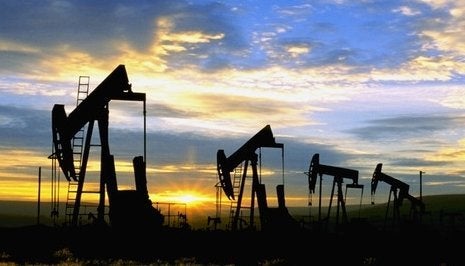

The Republican mandate to "drill, baby, drill" is shortsighted and unsustainable, yet even the most rational of Dems is now kowtowing to this call. On September 16, the House of Representatives debated a bill House Speaker Nancy Pelosi (D-Calif.) unveiled last week. In addition to conservation measures and the higher fuel efficiency standards addressed in my last post, the bill permits oil drilling 100 miles off the Atlantic and Pacific coasts and empowers coastal states to decide whether to allow drilling as close as 50 miles off their shores. A variation of this bill developed in the Senate plays with the boundaries of who can drill where, in a water-logged version of NIMBY.
Weaning America off the teat of foreign oil is something that every citizen can agree is a good thing. But most of that foreign oil comes from just north and south of us in Canada and Mexico, presumably not countries that John McCain says "don't like us very much." Suck on that, Senator.
Let's be clear, this legislation will not take away your hurt at the pump, regardless of your political affiliation. What it will do is finally start to put some funding into the renewable energy infrastructure that we so desperately need. Royalties from the minuscule amounts of oil that we extract offshore will be pooled with increased tax revenue from big oil to fund domestic renewable energy resources: the sources that keep on giving. I'll explore more of these over the next few weeks. Let's start with the energy source that is getting the most attention at the moment: wind.
Oil tycoon and Swiftboat funder T. Boone Pickens has sunk billions into what he hopes will be the largest wind farm in the world, bolstered by U.S. Department of Energy research indicating wind could generate 20% of our energy by 2030. Pickens is not an altruist. He's a shrewd businessman who looks after his own interests and wants to continue to grow his wealth. Right now wind is just 1% of our total domestic energy mix. The huge growth potential of wind coupled with dwindling fossil fuels makes the energy source a darling of environmentalists and Wall Street. Last year, nearly half of the $54.5 billion spent on clean energy generation went to wind. And for the last three years, the U.S. has been the largest market in the world for new wind turbine sales, reflecting the growth in wind farms across the country.
But with all the fanfare, we still have a long way to go. The windiest spots tend to be situated in the middle of nowhere, making heavy-wind areas inaccessible to consumers and transmission lines that could move the electricity to where it's needed. Some locations closer to civilization are suffering a logjam of entrenched political interests, like the scenario playing out in full color in Kansas, a state with the 3rd largest wind capacity in the country that currently gets only 1% of its energy from wind and almost 90% from coal. Other locales are reluctant to get windy for cosmetic reasons (yes, even Democrats are vain).
If we want to harness our earthly elements for power and energy, it's time to re-define beauty and reinvigorate our economy. Turbines eliminate the invisible, ugly impacts of coal like mercury contamination and air pollution, and the market volatility of dwindling resources such as coal and petroleum.
Don't get me wrong. We still have major primping to do in the form of improved tax credits and rapid investment in infrastructure. Maintenance costs are low, but wind is more expensive to build. The Pelosi bill is a significant step in recognizing the long-term benefits of clean, abundant, homegrown energy and reduced greenhouse gas emissions.
This post was written by Simran Sethi. Thanks to Merete Mueller for research assistance, the University of Kansas School of Journalism, and Kris Kros for the image. For more information on energy challenges and opportunities, subscribe to Simran's "Powering the Planet" podcasts.